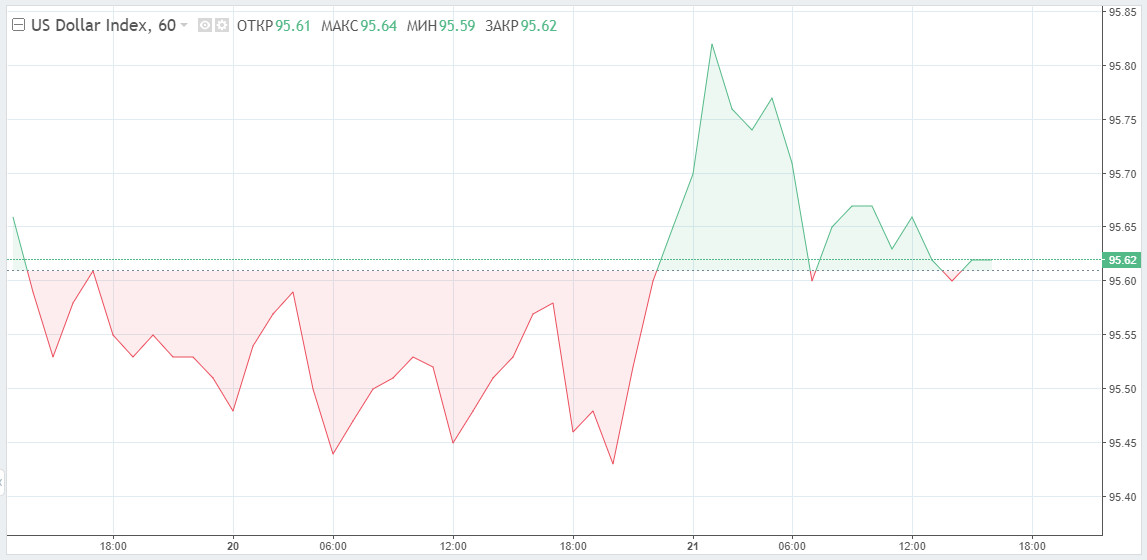
The US dollar eased against its major rivals on Friday after the release of the US jobs report. Thus, EUR rose by 0.32% against USD to 1.1336. Against the Japanese yen, the US currency fell by 0.11% to 113.97. In the first half of the day, the US dollar index, which measures its value against the currencies of six countries (US trading partners), dropped by 0.08% to 95.62.

The number of new unemployment claims filed last week (January 10-15) unexpectedly grew by 55,000, according to the data from the US Department of Labor released on Thursday, bringing the total number of claimants to 286,000. The reading reached its maximum level in the last three months. Economists polled by Reuters expected a lower figure of just 220,000 applications.
Apparently, the new COVID-19 wave during the winter months has greatly affected business activity in the country. The US Census Bureau conducted a household survey on Wednesday that showed 8.8 million people were out of work between December 29 and January 10 due to coronavirus infection. Notably, from December 1 to December 13, only 3 million people did not go to work for the same reason. However, Ryan Sweet, senior director at Moody's Analytics, believes the US job market will bounce back as cases of Omicron become less common every week.
A survey of small businesses, also released by the Bureau on Thursday, found that a growing number of businesses are reporting severe negative impacts from the spread of the coronavirus among workers. The hospitality and catering industries, including numerous educational and arts institutions, as well as entertainment and leisure companies, were among the hardest hit.
And yet, the markedly weak US labor market does not outweigh the problem of high inflation in the US. Therefore, the Federal Reserve will most likely stick to its plan on raising interest rates starting in March and at least three times this year. Claims for unemployment benefits have fallen from a record high of 6.149 million hit in early April 2020. American employers are desperate for workers: as of the end of November, there were 10.6 million vacancies in the country.
John Lynch, chief investment officer at Comerica Wealth Management, also believes that the not-so-best situation in the US labor market in recent weeks is still a temporary phenomenon associated solely with a surge in the Omicron cases. Today's unemployment rate in the US is very close to the maximum employment level. Once the impact of the COVID-19 spread begins to ease, job growth in the country will stabilize.
In this light, the US dollar, which has been trading steadily higher against other majors, took a break on Friday, especially since the US Treasury yields were also falling. Yet, we should keep in mind that ahead of the Fed policy meeting, the greenback has every chance to demonstrate the best performance over the past month. Expectations of hawkish comments from the Fed officials may serve as the main driver for the dollar. A USDX decline to the area of 95.50-94.50 will create an opportunity to open long positions for a long term of 10 to 12 months.
 English
English 
 Русский
Русский Bahasa Indonesia
Bahasa Indonesia Bahasa Malay
Bahasa Malay ไทย
ไทย Español
Español Deutsch
Deutsch Български
Български Français
Français Tiếng Việt
Tiếng Việt 中文
中文 বাংলা
বাংলা हिन्दी
हिन्दी Čeština
Čeština Українська
Українська Română
Română

